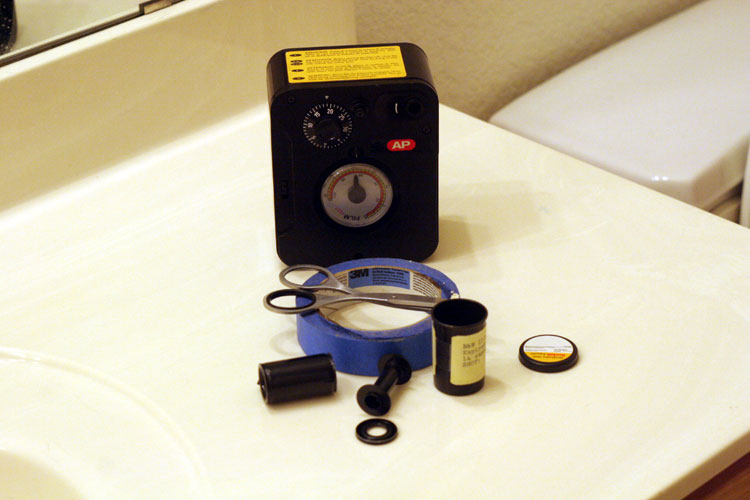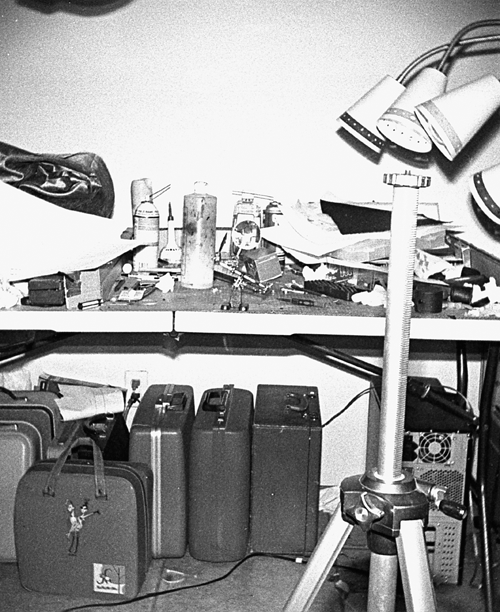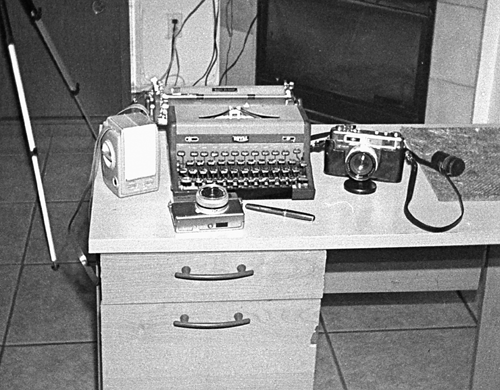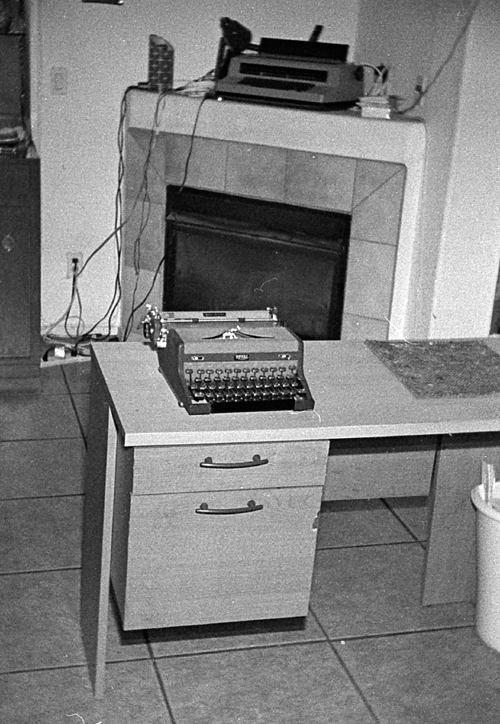I needed to run a test film roll through the Canonet 28 on Saturday to test for light leaks and make sure the exposure was working right, and while I was at it, might as well shoot some 3D squigglies with the Nishika N8000 so I’d have 2 rolls to develop. That meant rolling up a couple short test rolls, doing a quick shoot and developing session.
It seemed like a good opportunity to document my process of using a film camera to make digital images from start to finish. Over the past couple of months, I feel I’ve perfected my process to the point where I can easily have digital images up the same day of the shoot, so I figured maybe others would like a peek at how that works. It’s fun, relatively fast and super-cheap. I figure my cost per roll for using film is usually under $2, which is about the price point where I can feel comfortable with shooting rolls for no particular reason other than getting in the practice. That, I feel, is key to making it a viable hobby and eventually may lead to me becoming a halfway decent photographer. One can always hope. (:
It’s also an excellent opportunity to test out attaching a photo gallery to my post. Never done that before, so let’s see if it works…
IMG_6807
and now, the resulting photos:

Canonet 28, inside with Canon Speedlite 244T flash. It’s not the flash that the camera was designed to operate with, but seems to do ok, if a bit underexposed.





Thanks for the detailed lab work.
I’ve yet to try the process. In fact I have yet to test the Nikkormat I picked up 3 months ago and I have not decided if I want to hack the Canon since it works so good as is, but a hack will at least let me shoot and save RAW format images instead of only JPEG.
Now I get it. Caffenol C is really a home brew. It certainly makes for a very entertaining post – superb!
What I really like about the ‘3D’ sequenced gifs is that the beauty of the camera is that they are all taken simultaneously but the glorious contamination of your developing process gives them a scratchy movie-like motion.
I like the 3D/earthquake effect you create. It gives your stills lifelike qualities. I hope it’s not too late to ask this question about the Royal QDL in the shot. I have a Royal QDL and from the research I’ve done, I’ve calculated it’s a 1949 machine too. My serial #A-1848908 falls into the gap in the list of manufacturing dates between 1949 and 1950. Would you know the definite year for it?
oh, sorry, I mixed up the date on Moneypenny, she’s actually a 1948 model #A-1551567 (fixed text).
The difference I’ve observed is that 1948’s are invariably this grey/black combination in color, while 1949’s are all dove-grey. This excludes the gold-plated ones, of course. I have one of each, and other than the paint and slightly different face trim, they are pretty much identical. In 1950, I believe that Royal switched to the new body style, but retained the glass tombstone keys until around 1951. It seems difficult to find the 1950 model, nobody I know has fessed up to seeing one.
#A-1848908 would be 1949, so I’m guessing it’s painted in the dove grey crinkle paint.
Yes, my QDL is dove grey indeed. I†’s good to finally know the year my machine was created. I’ve use my reliable Royal for screenwriting and have all my margins set up for that kind of work. I wish I still had the original metal ribbon spools, but back in the 80’s, the guy who sold me a new pair of plastic ribbon spools told me that I needed to send him my original spools (in exchange). I try not to think of that too much and stay positive that one day I will find a new pair of metal spools for my machine just so it can feel complete.